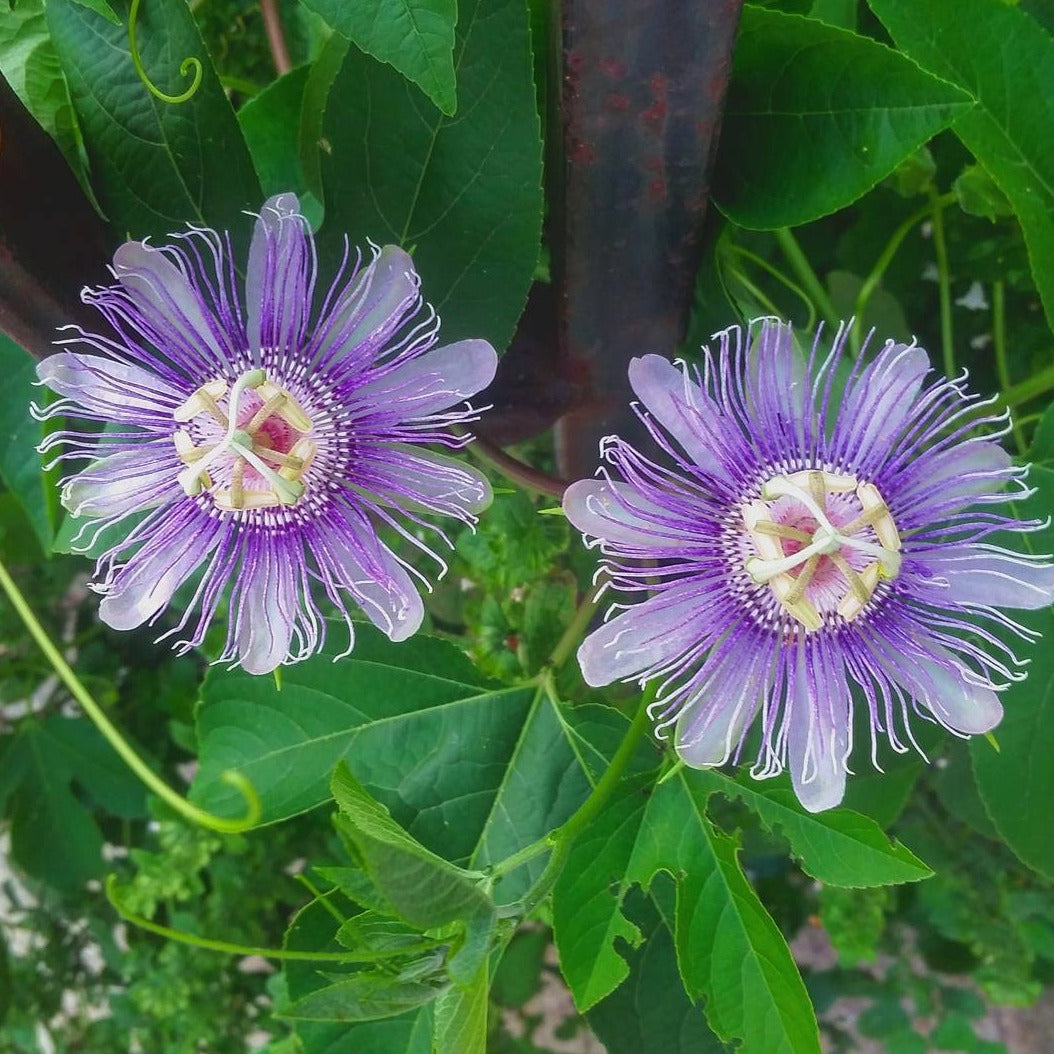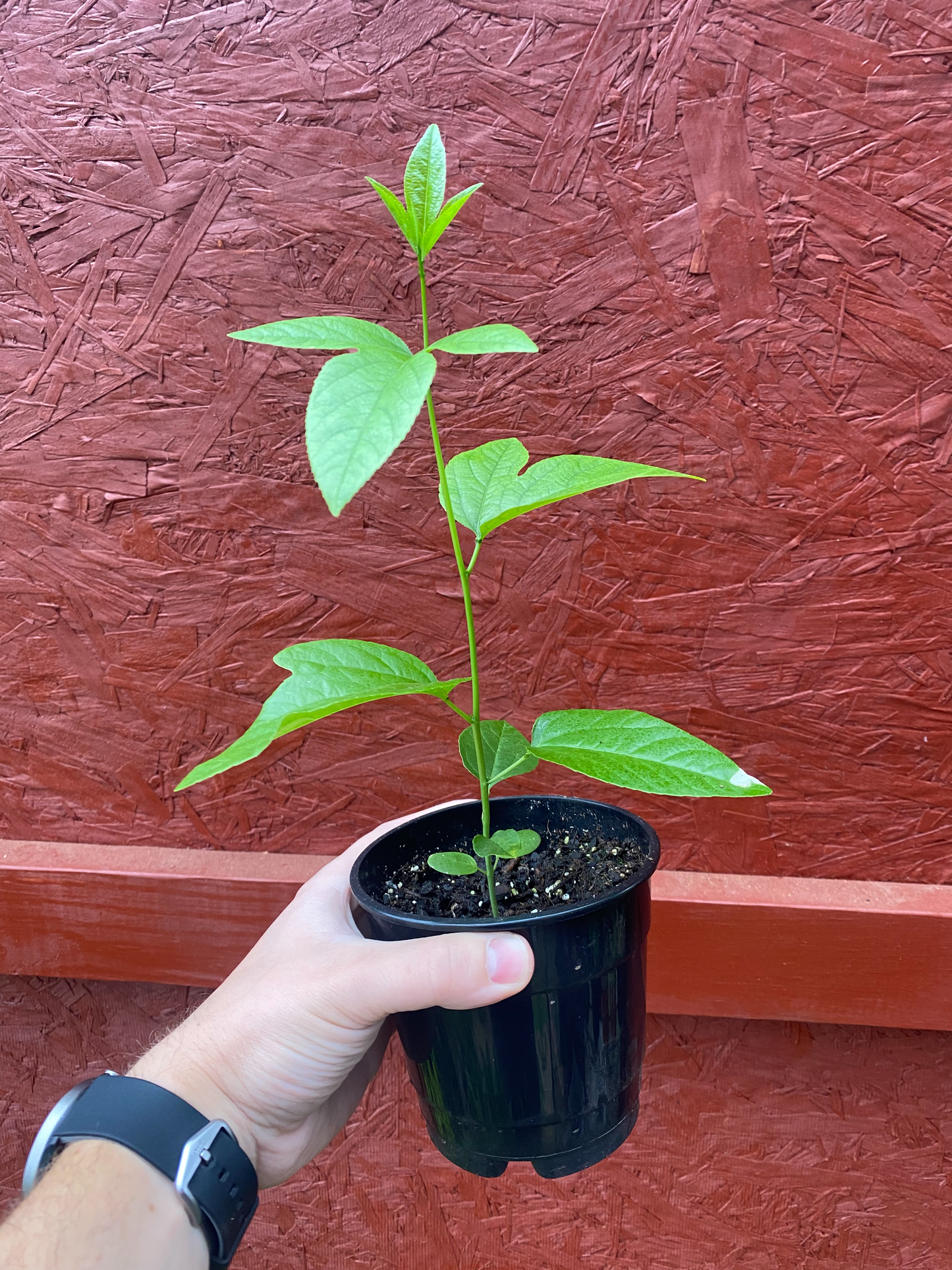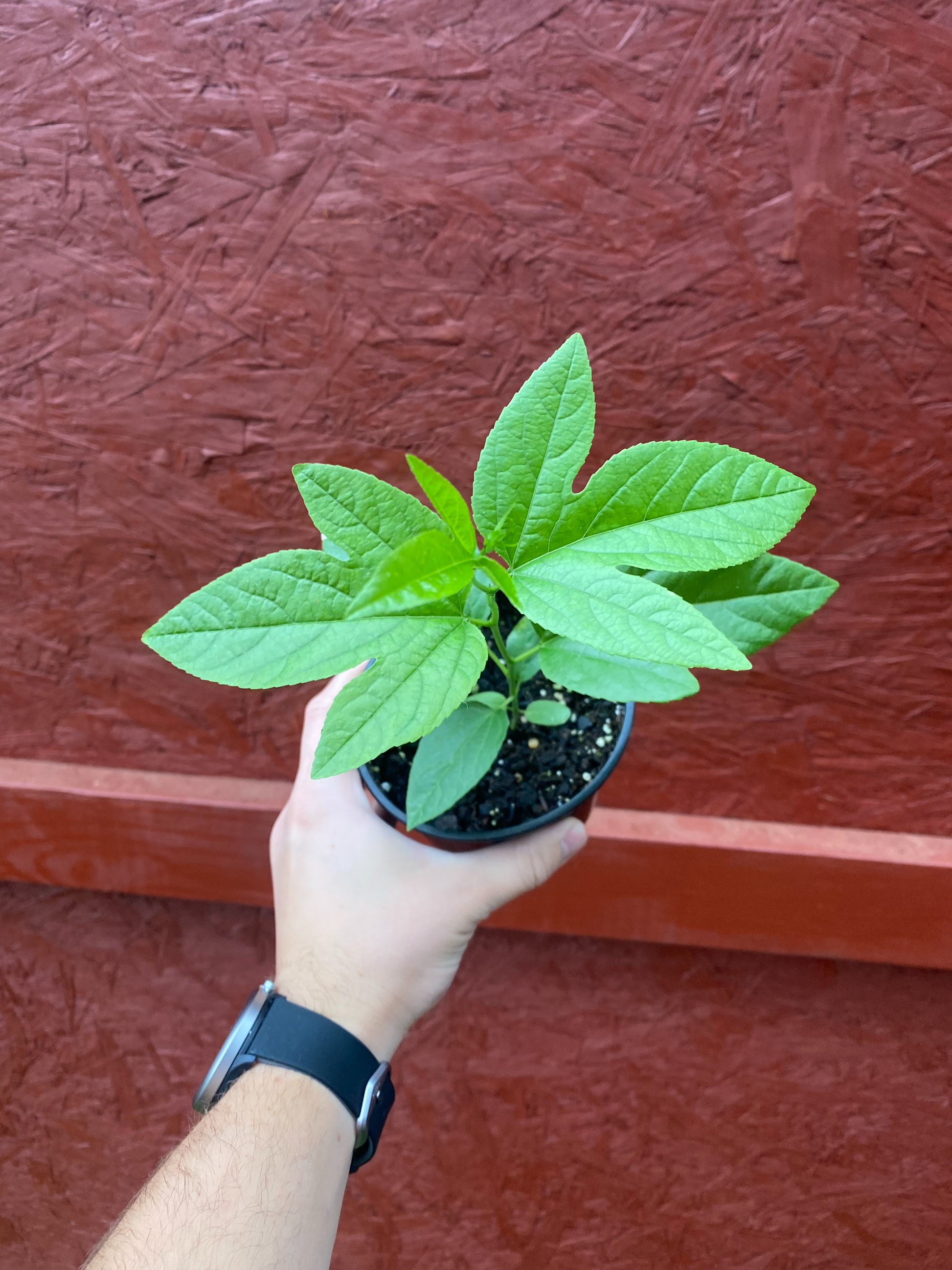The American Fig Company
Hardy Passion Fruit (Maypop)
Hardy Passion Fruit (Maypop)
Couldn't load pickup availability
The Maypop, Passiflora incarnata, also known as the Purple Passionflower, is a fast-growing and hardy perennial vine known for its unique and exotic flowers, as well as its edible fruit. Native to the southeastern United States, this plant is celebrated not only for its ornamental beauty but also for its resilience and adaptability, making it a fascinating addition to diverse garden settings.
Latin Name: Passiflora incarnata
Site and Soil: The Maypop thrives in full sun to partial shade, preferring well-drained soil rich in organic matter. It adapts well to a variety of soil types, from sandy to loamy to clay, with a pH range of 6.0 to 7.5. Ensuring good drainage is crucial to prevent root rot.
Pollination Requirements: While Maypop flowers are self-pollinating, attracting pollinators such as bees and butterflies can enhance fruit production. Its intricate, lavender-colored flowers not only add beauty to the garden but also support local pollinator populations.
Hardiness: Passiflora incarnata is hardy in USDA zones 6 through 9, demonstrating good cold tolerance for a passionflower. It can die back to the ground in winter in colder areas but typically returns vigorously in spring.
Bearing Age: Maypop vines can start to bear fruit within the first year of planting, especially if grown in optimal conditions and with proper care. Full maturity and maximum fruit production usually occur in the second or third year.
Size at Maturity: This vine can rapidly grow to 10-15 feet in length in a single season, making it an excellent choice for covering trellises, fences, and other structures. Regular pruning can manage its growth and encourage a fuller, bushier plant.
Bloom Time: The Maypop produces its striking flowers from early summer to fall, offering a long season of visual interest. The blooms, large and fragrant, are followed by egg-shaped, edible fruits.
Ripening Time: The green fruits mature to a yellowish color in late summer to early fall, indicating they are ripe and ready to be eaten. The fruit has a sweet-tart flavor, reminiscent of tropical passionfruit, and can be used in various culinary applications.
Yield: While the yield can vary based on growing conditions and care, a single Maypop vine can produce a generous amount of fruit, especially as the plant becomes more established in its location.
Pests & Diseases: Maypop is relatively resistant to pests and diseases, though it can occasionally be susceptible to common garden pests. Natural predators and organic gardening practices can help manage any issues.
USDA Zone: 6-9. This range indicates the Maypop's ability to thrive in a variety of climates, from moderate to warmer regions, with some cold tolerance for overwintering in cooler zones.
The Maypop, with its captivating flowers, edible fruit, and versatility in landscape design, is a valuable plant for gardeners looking to add a touch of the exotic to their outdoor spaces. Its ease of care, combined with its benefits for pollinators and potential culinary uses, make it a multifaceted choice for a wide range of gardening projects.
Share



Featured Review
"Great! Great! Great! Great! Great!"
✰✰✰✰✰
- JARREN -



